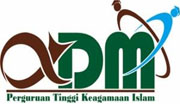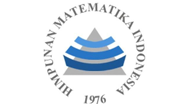RANKING FACTORS AFFECTING STUDENT ACADEMIC ACHIEVEMENT WITH FUZZY AHP METHOD
Abstract
The main purpose of education is to foster and improve students' knowledge, skills and behaviors, enabling them to effectively apply their acquired abilities in the broader context of society. According to Chapter I Article 1 of the National Education System Number 20 of 2003, education is characterized as a deliberate and organized effort aimed at creating an environment conducive to learning and facilitating a process through which learners actively develop their innate abilities. The ultimate goal is to foster the development of spiritual resilience, religious understanding, self-discipline, individuality, intellectual intelligence, noble morals, and skills necessary for personal, community, nation, and state advancement.
Many factors influence student achievement, including internal and external dimensions. Internal factors include various elements, including physical aspects such as health and disability, psychological factors such as intelligence, attention, interest, talent, motive, maturity, and readiness, and fatigue factors such as physical and mental fatigue. External influences include various aspects related to the family, including parenting, educational background, family relationships, home atmosphere, family economy, parental understanding, and cultural background. In addition, school factors summarize various elements such as learning strategies used by teachers, curriculum design, teacher-student interaction, student interaction, school policies, educational resources, school scheduling, lesson benchmarks, facility conditions, learning approaches, and homework assignments. The community aspect includes various elements such as student involvement in social activities, the impact of mass media, social relationships, and various forms of community involvement. This study examines the influence of several environmental elements, including physical, psychological, family, school, and community factors on student academic achievement, namely students attending public junior high schools located in Sei Bingai District, Langkat Regency using the Fuzzy Analytical Hierarchy Process (FAHP) methodKeywords
Full Text:
PDFReferences
K. D. Goepel, “Implementing the Analytic Hierarchy Process as a Standard Method for Multi-Criteria Decision Making In Corporate Enterprises – A New AHP Excel Template with Multiple Inputs,” in Proceedings of the International Symposium on the Analytic Hierarchy Process, Kuala Lumpur, 2013. doi: https://doi.org/10.13033/isahp.y2013.047.
L. I. Ahmad, “Konsep Penilaian Kinerja Guru Dan Faktor Yang Mempengaruhinya,” Idaarah J. Manaj. Pendidik., no. 1, pp. 133–142, 2017, doi: https://doi.org/10.24252/idaarah.v1i1.4133.
A. Akbar, A, “Penerapan Metode Fuzzy Analytical Hierarchy Process Terhadap Penilaian Kinerja Guru,” J. Teknokompak, vol. 14, no. 2, pp. 111–114, 2020.
U. Aprillya, R, M., Chasanah, “Sistem Pendukung Keputusan Identifikasi Daerah Rawan Kekeringan Dengan Metode Fuzzy Analytical Hierarchy Proces (Studi Kasus: Kabupaten Lamongan),” ). J. Comput. Sci. Infomation Technol., vol. 3, no. 2, pp. 159–167, 2022.
G. Doaly, O, C., Moengin, P., Chandiawan, “Pemilihan Multi-Pemasok Department Store Menggunakan Metode Fuzzy AHP Dan Topsis,” J. Ilm. Tek. Ind., vol. 7, no. 1, pp. 70–78, 2019.
A. and W. H. Emrouzjenad, Fuzzy Analytic Hierarchy Process. London: Taylor and Francis Group, 2017.
B. Fitriana, C, N., Santosa, “Analisis Faktor-Faktor Pemilihan Suplier Material Pada Jasa Usaha Kontruksi Dengan Metode Fuzzy AHP,” J. Fondasi, vol. 9, no. 1, pp. 1–11, 2020.
S. Harahap, R, A., Simbolon, M, H, N., Agata, A, R., “). Metode Fuzzy AHP (Analytical Hierarchy Process) Untuk Pemilihan Metode Pembelajaran Demi Menunjang Pembelajaran Matematika,” . J. Sains Dan Edukasi Sains, vol. 5, no. 1, pp. 9–17, 2022.
H. Kusumadewi, S dan Purnomo, Aplikasi Logika Fuzzy untuk Pendukung Keputusan. Yogyakarta: Graha Ilmu, 2014.
H. Martin, A., Suprapto, B., Sulasminarti., Widiyastuti, A., Kurniawan, F, D., Simanjuntak, “Penerapan Metode Fuzzy AHP ( Analytical Hierarchy Process) Sebagai Sistem Pendukung Keputusan Dosen Terbaik (Studi Kasus: STMIK PRINGSEWU),” J. Inf. Dan Komput., vol. 10, no. 1, pp. 194–207, 2022.
T. L. Saaty, The Analytic Hierarchy Process. New York. NY: McGraw Hill, 1980.
T. L. Saaty, Group Decision Making and the AHP. New York, NY, USA: Springer-Verlag, 1989.
Slameto., Belajar dan Faktor-Faktor yang mempengaruhinya. Jakarta: Rineka Cipta, 2003.
S. Vani, “Analisis Pengaruh Motivasi Belajar terhadap Hasil Belajar Ekonomi Siswa Kelas X SMA Negeri 5 Padang,” J. Ekon. Res. Econ. Econ. Educ., vol. 4, no. 2, pp. 308–314, 2016, doi: https://doi.org/10.22202/economica.2016.v4.i2.669.
DOI: http://dx.doi.org/10.30829/zero.v7i1.17095
Refbacks
- There are currently no refbacks.

This work is licensed under a Creative Commons Attribution-ShareAlike 4.0 International License.
Publisher : Department of Mathematics Faculty of Science and Technology Universitas Islam Negeri Sumatera Utara Medan | |
✉️ Email: zero_journal@uinsu.ac.id 📱 WhatsApp:085270009767 (Admin Official) | |
 |  |  |  |  |



